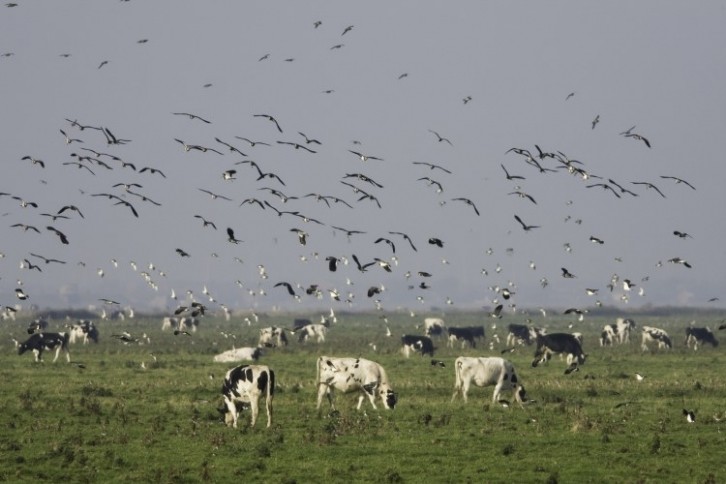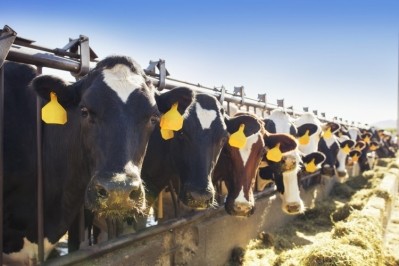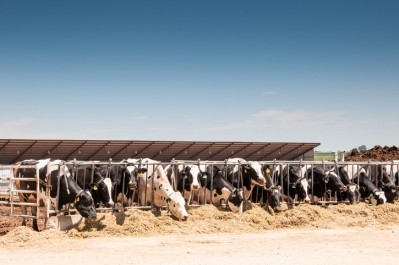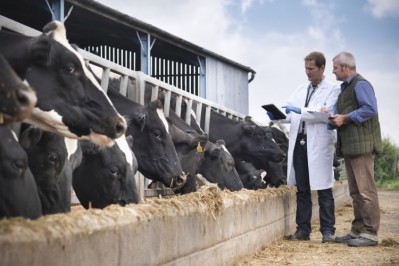First human case of bird flu due to exposure to ill dairy cows recorded in the US

The infection in a human, which is only the second in US history of a person infected with bird flu, is believed to be linked with the recent outbreak of avian influenza A(H5N1) in dairy cows.
The current outbreak of highly pathogenic avian influenza (HPAI) began in 2022, with H5N1 being the primary strain. Until recently, it had never been detected in ruminants.
But in late March, the USDA reported that cows sickened by a ‘mystery disease’ that made them produce thick, colostrum-like milk and lowered their appetite, was in fact avian flu. The detections are thought to be linked to wild waterfowl, but federal agencies are investigating multiple scenarios.
Until recently, experts believed cows to be ‘dead-end hosts’, meaning that infected cows were unlikely to further transmit the virus to other cows or to humans. However, people with close or prolonged unprotected exposures to infected animals or environments are thought to be at greater risk of infection.
The Centers for Disease Control and Prevention said the person presumed to be infected with the A(H5N1) strain ‘had exposure to dairy cattle in Texas’ and their only symptom was eye redness consistent with conjunctivitis. They are being treated with an antiviral flu drug and are recovering but have been told to isolate.
“This infection does not change the H5N1 bird flu human health risk assessment for the US general public, which CDC considers to be low,” the organization said.
Cow-to-cow transmission ‘cannot be ruled out’
Over the weekend, the USDA also confirmed a case of HPAI in a Michigan dairy that had recently received cows from Texas. The strain of the virus found in Michigan was ‘very similar’ to the strain confirmed in Texas and Kansas and means that cow to cow transmission ‘cannot be ruled out’.
While USDA is thought to be against movement controls, the department has advised veterinarians and producers to practice good biosecurity, test animals before necessary movements, minimize animal movements, and isolate sick cattle from the herd.
However, the Nebraska Department of Agriculture (NDA) has become the first state to impose restrictions on the import of dairy cattle due to the HPAI detections. The importation order will require all breeding female dairy cattle entering the state to obtain a permit issued by NDA prior to entry. The new importation order will be in place for 30 days (until April 30, 2024) and will be re-evaluated at that time. The Nebraska department also recommends that new animals are quarantined for 30 days 'if possible'.
Additional detections
USDA’s National Veterinary Services Laboratories have also received ‘presumptive’ positive test results from herds in New Mexico, Idaho and Texas, meaning that the results are yet to be confirmed but likely to be positive.
Federal and state agencies continue to conduct additional testing in swabs from sick animals and in unpasteurized clinical milk samples from sick animals, as well as viral genome sequencing, to assess whether HPAI or another unrelated illness may be underlying any symptoms.
No concern for milk supply and consumption
Federal agencies have continued to emphasize that commercial milk supplies remain safe for consumption.
This is because all milk sold in interstate commerce is required to be pasteurized – and pasteurization inactivates the virus. In addition, due to the vastly different viscosity of the milk that infected cows produce, it is unlikely to end up in the bulk tank, experts from Penn State explained last week. Dairies are also required to divert and destroy milk from any ill cows.
As for the effects on milk supply, milk loss resulting from symptomatic cattle to date is 'too limited' and there should be no impact on the price of milk or other dairy products, the USDA said, adding that production increase in the spring should more than offset any losses due to the outbreak.
What now?
The CDC said that the risk to human health from the virus remained low ‘at this time’ but added that it ‘considers HPAI A(H5N1) viruses to have the potential to cause severe disease in infected humans’. CDC told us that this concern regarding the virus' potential to cause severe disease is not new.
For farmers, the CDC recommends avoiding unprotected exposure to sick or dead animals as well as with animal feces, litter, and raw milk. Farm workers should wear personal protective equipment (PPE) such as N95 filtering masks, eye protection and gloves and wash hands thoroughly after contact.
For healthcare providers, the advice is to consider HPAI in patients who have symptoms of a respiratory illness and have been potentially exposed to sick animals. In those cases clinicians should arrange testing with the state public health department, collect test samples, consider starting antiviral treatment and encourage the patient to isolate at home away from their household members and not go to work or school until it is determined they do not have avian influenza A virus infection.
The CDC notes that human infections with the virus are rare but having unprotected exposure to any infected species or environments can pose a risk of infection.
Meanwhile, the Texas DSHS is working with state and federal agencies to investigate the human and animal cases and understand how the virus is spreading in order to protect livestock and people who work with it.











